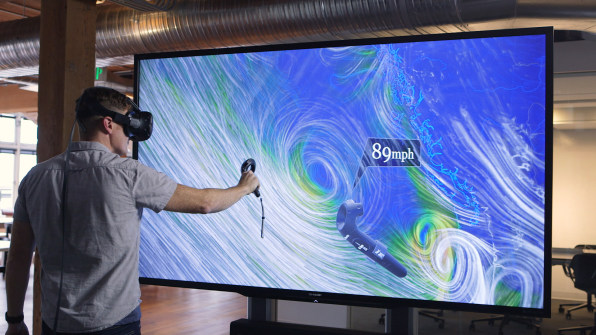Exposed Vr Design Multi Tool
Despite all the investment in virtual reality content, producing it is still a workflow nightmare. Developing a VR game requires coding on a 2D computer monitor, before checking the work inside a 3D headset. Shooting a 360-degree film mandates the director magically divine where their viewer will look. Then sprawling server farms stitch together countless terabytes of data into a final product.
Thus far, there's no rapid prototyping tool like Sketch or Adobe XD for virtual reality, leading some designers to mock up experiences in old-fashioned paper. But Seattle design firm Artefact wants to change that with new software called StoryboardVR. For use inside HTC Vive headsets, StoryboardVR is essentially a bare-bones way to mock up virtual worlds, interfaces, and pretty much any other experience you need to literally step inside to see.
The tool was built by Artefact to expedite the creation of its own VR work. "This is what we do for a lot of our projects now," says Paul Hoover, one of the creators. "We storyboard it out–almost like Invision or Powerpoint in VR. Then we'll take more time and build out a higher-scale version of the experience."
Hoover walks me through a live demo demonstrating exactly how StoryboardVR works. It's set up much like Google's Tiltbrush–with a palette in your left hand, and a pointer in your right. You start inside an empty environment. From the palette, you pull in assets that you've already built in Photoshop or some other conventional software. This can include spherical backdrops, like underwater scenes that seem to stretch into infinity, as well as all sorts of objects to fill it, like fish, whales, and blurbs of related text. "That's what people are doing mostly," says Hoover as he sets a humpback whale over his head. "Bringing in environment maps at a large scale, then posting these objects around you."
To place any asset, you just pick it up with the HTC's wand and set it in midair. They can be resized, moved in XYZ space, and cloned, but notably, these objects can only be 2D. "We did that on purpose to simplify the interaction," says Hoover. "As soon as you bring in a 3D object, you're going to want to be able to click it, rotate it, move it forward and back, and scale it. We felt like you can get really far using 2D assets at first if you think of it more as a sketching tool. Instead of having a bunch of resizing handles and stuff, you can click and drag." But there's nothing stopping StoryboardVR from supporting 3D objects in the future, he adds.
The app really can make quick work of even a complicated scene. Hoover even showed how he could take a layered sketch a colleague had drawn on a tablet–of what looked like Paris–and then place the individual park benches, trees, and buildings into a convincing 3D space. What's enticing in this scenario is that, clearly, content not developed for VR can be imported into VR–meaning that something like StoryboardVR may make it possible for concept artists working in 2D to port their work to 3D.
But what ultimately makes the software so promising as a prototyping tool is that StoryboardVR features "slides." This means you can set up several scenes in a sequence–sort of like stop-motion animation–to demonstrate how a giant robot might approach in a video game, or how an e-commerce site could work in VR. It's essentially a quick and dirty way to try designs and scripted animations as theory before coding it in Unity or something else. Will this trail of light lead someone's eye across the horizon? Is this button going to be out of the user's field of view? Does this space feel claustrophobic? Does it feel too empty?

Once a StoryboardVR scene is built, the app lets you click on any object to measure how far it is from the viewer, offering a precise number to duplicate when building the full interactive experience on a computer. But notably, it doesn't offer any sort of exportable file that developers can code on top of.
"Right now, you can send a read-only version to your client," says Hoover. "We were thinking in the future of being able to export that into Unity." Artefact's continued development on the platform will likely come down to how much interest it garners. The studio is just announcing StoryboardVR today, with the intent to distribute the software–pricing unknown–in early 2017.
But maybe the most compelling possibility of StoryboardVR isn't StoryboardVR itself, but that many content creators like Artefact may be actively building such tools for their own use. And whether or not these studios even release that software, it means the experiences we all have in VR, as consumers, will be getting better, fast.
Exposed Vr Design Multi Tool
Source: https://www.fastcompany.com/3065855/a-rapid-prototyping-tool-for-creating-vr-worlds
Posted by: jordanfriess50.blogspot.com

0 Response to "Exposed Vr Design Multi Tool"
Post a Comment